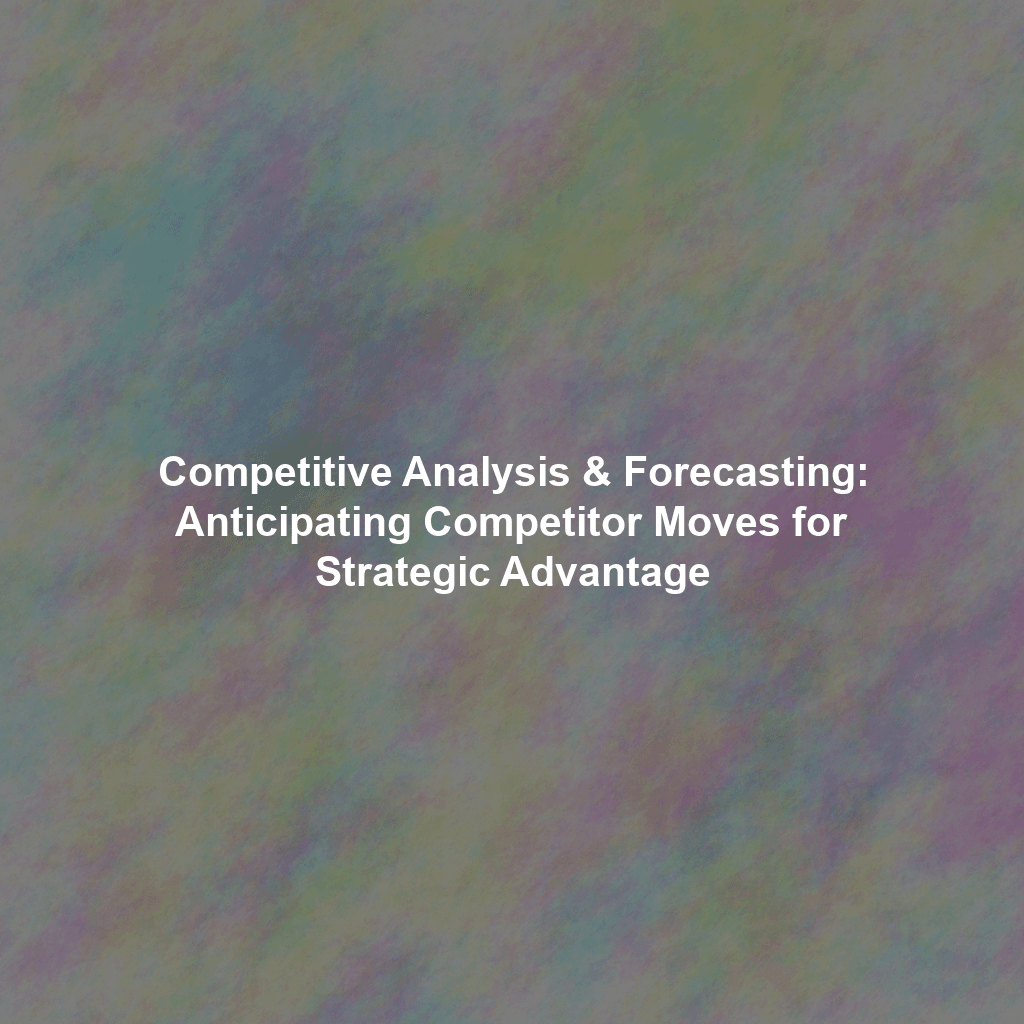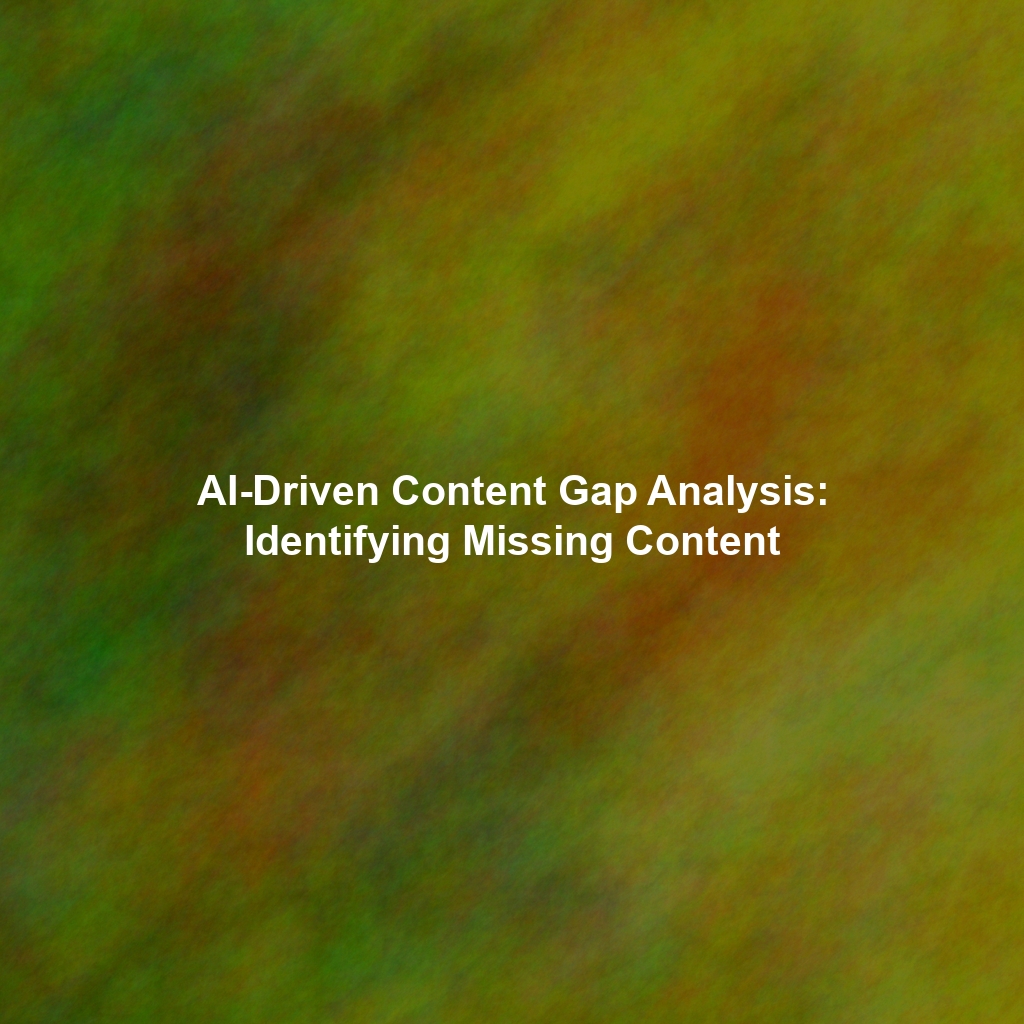This isn’t about cloak-and-dagger tactics or industrial espionage. Instead, it hinges on the diligent collection of publicly accessible information, the rigorous analysis of emerging patterns, and the development of well-reasoned predictions. By gaining a deep understanding of your competitors’ inherent strengths, their discernible weaknesses, their overarching strategies, and their potential future actions, your business can proactively refine its own marketing approaches, optimize the allocation of its resources, and maintain a crucial step ahead in the competitive race.
Deconstructing the Competition: The Nuances of Competitive Analysis
Competitive analysis represents a systematic and thorough evaluation of both your direct and indirect competitors. This process involves meticulously gathering information pertaining to their fundamental business models, the specifics of their products and services, their deployed pricing strategies, their chosen marketing tactics, their inherent strengths, their identifiable weaknesses, and their overall performance metrics. The primary objective is to pinpoint both potential opportunities that your business can exploit and potential threats that could pose a risk to its success.
Key Areas of Focus in Competitive Analysis
- Identifying Competitors: This extends beyond simply listing the most obvious companies in your sector. It requires a broader perspective, encompassing indirect competitors – those entities that offer alternative solutions addressing the same underlying customer need. For instance, a company selling project management software might consider email and spreadsheet solutions as indirect competitors for certain user segments. Understanding this broader competitive landscape is crucial for a comprehensive analysis.
- Analyzing Products and Services: A deep dive into your competitors’ offerings is essential. What are the core features and functionalities of their products or services? What are the perceived advantages and disadvantages from a customer perspective? What are the intricacies of their pricing structures – are they using value-based pricing, cost-plus pricing, or a competitive pricing strategy? Understanding these aspects allows you to identify potential differentiation points for your own offerings.
- Marketing Strategies: How are your competitors engaging with their target audience? What specific marketing channels are they actively utilizing – are they focusing on digital marketing, traditional advertising, content marketing, social media engagement, or a combination? What is the core messaging they are conveying? A thorough analysis should encompass their online presence (website design, user experience), their activity on various social media platforms, the quality and reach of their content marketing initiatives (blog posts, white papers, webinars), and the effectiveness of their advertising campaigns (search engine marketing, social media ads, display advertising).
- Sales Performance: Gaining insight into your competitors’ sales figures, their overall market share, and their rates of growth can provide invaluable context regarding their effectiveness in the market. Are they experiencing rapid growth, or is their market share stagnant or declining? Understanding these trends can inform your own sales strategies and market positioning. Publicly available financial reports, industry reports, and market research data can be crucial sources for this information.
- Customer Reviews and Feedback: What are customers openly saying about your competitors? Analyzing customer reviews and feedback, gathered from various online platforms, social media channels, and industry-specific review sites, can reveal both their perceived strengths (areas where they excel in customer satisfaction) and their significant weaknesses (areas of customer dissatisfaction). This unfiltered feedback can provide insights that might not be readily apparent through other forms of analysis.
- Financial Performance: For publicly traded companies, a wealth of financial data is typically available, including revenue, profitability, cash flow, debt levels, and overall financial health. Analyzing these indicators can provide crucial insights into your competitors’ stability, their capacity for investment, and their potential vulnerability to economic downturns or market shifts. Resources like the SEC’s EDGAR database in the United States offer access to company filings.
Tools for Competitive Analysis
A range of tools, varying in complexity and cost, can significantly assist in the process of competitive analysis:
- Google Alerts: A free and simple tool that allows you to monitor online mentions of your competitors, their brands, key personnel, and relevant industry keywords. This helps you stay informed about their activities and public perception.
- Social Media Monitoring Tools (e.g., Meltwater, Hootsuite): These platforms offer more sophisticated capabilities for tracking competitor activity and brand sentiment across various social media platforms. They can provide valuable insights into their engagement strategies, audience demographics, and the overall perception of their brand.
- SEO Analysis Tools (e.g., SEMrush, Ahrefs): These powerful tools allow you to analyze your competitors’ website traffic, the keywords they are ranking for in search engine results, their backlink profiles (the websites linking to theirs), and their overall online visibility. This information is crucial for understanding their digital marketing strategy and identifying opportunities for your own SEO efforts.
- Market Research Reports: Reputable market research firms, such as Gartner and Statista, provide in-depth industry-specific data, analysis, and forecasts. While often requiring a subscription, these reports can offer valuable insights into market trends, competitor performance, and future outlook. Many academic institutions also conduct relevant market research (example).
- Company Websites and Publications: A direct and often overlooked source of information. Scrutinizing competitor websites, reading their press releases, analyzing their annual reports (for public companies), and reviewing any publicly available marketing materials can reveal key strategic initiatives, product roadmaps, and corporate messaging.
- Customer Review Sites (e.g., Yelp, Trustpilot): These platforms provide a direct line to customer experiences with your competitors’ products and services. Analyzing the volume and sentiment of reviews can highlight areas where your competitors excel or fall short.
Peering into the Future: Leveraging Forecasting Techniques
Forecasting is the systematic process of predicting future events or trends based on the analysis of historical data and the consideration of current market conditions. Within the context of competitive analysis, forecasting serves a critical function by enabling you to anticipate your competitors’ future actions and to predict the potential impact of these actions on your own business. This proactive approach allows your organization to prepare effectively for potential challenges that may arise and to strategically capitalize on emerging opportunities within the market.
Forecasting Methods for Competitive Advantage
A diverse range of forecasting methodologies can be employed to anticipate the strategic moves of competitors and to enhance the accuracy of your overall marketing forecasts:
Quantitative Forecasting
Quantitative forecasting methods heavily rely on the examination of historical data and the application of statistical analysis to project future outcomes. These methods prove particularly valuable when a substantial and reliable dataset is available for analysis.
- Time Series Analysis: This statistical technique involves analyzing historical data points collected over a specific period to identify underlying patterns, such as trends (long-term increases or decreases), seasonality (predictable fluctuations within a year), and cyclical patterns (longer-term, less predictable variations). By identifying these patterns in your competitors’ past performance (e.g., sales figures, market share), you can develop projections for their future performance in these key areas. Statistical software packages like IBM SPSS Statistics or the open-source language R are often used for this type of analysis.
- Regression Analysis: Regression analysis is a statistical method used to identify and quantify the relationships between different variables. For example, you might use regression analysis to determine the extent to which changes in a competitor’s pricing strategy have historically correlated with changes in their sales volume. By understanding these relationships, you can build models to predict how future changes in one variable (e.g., competitor pricing) might impact another (e.g., their sales). Different types of regression, such as linear regression and multiple regression, can be applied depending on the complexity of the relationships being examined.
Qualitative Forecasting
Qualitative forecasting methods, in contrast to quantitative approaches, primarily rely on the insights and subjective judgments of experts and informed individuals. These methods are particularly useful in situations where historical data is limited or when it’s necessary to consider factors that are inherently difficult to quantify using numerical data alone.
- Expert Opinions: This method involves systematically gathering insights, predictions, and informed perspectives from individuals who possess deep knowledge and understanding of the competitive landscape. These experts might include industry analysts, experienced consultants specializing in your sector, or internal stakeholders within your own organization who have a strong grasp of competitive dynamics. The value of this method lies in leveraging the accumulated experience and intuition of these knowledgeable individuals.
- Delphi Method: The Delphi method is a structured and iterative communication technique designed to gather and refine expert opinions in an anonymous and unbiased manner. In this process, a panel of experts is asked to provide their individual forecasts or assessments regarding a specific question or trend. Their responses are then compiled and summarized, and this summary is shared back with the panel members, who are given the opportunity to revise their initial opinions based on the collective insights. This iterative process continues over several rounds until a degree of consensus or a stable range of perspectives emerges. This anonymity helps to mitigate the influence of dominant personalities and encourages independent thinking.
- Scenario Planning: Scenario planning involves the development of multiple plausible and distinct scenarios that represent different potential future states of the market or the competitive environment. For each of these scenarios, you then analyze how your competitors might strategically react and what potential actions they might take. This proactive approach helps your organization to prepare for a wider range of potential future outcomes, rather than relying on a single, potentially inaccurate prediction. By considering different “what if” situations, you can develop more robust and adaptable strategies. Organizations like Shell have historically used scenario planning extensively.
Combining Quantitative and Qualitative Methods
Often, the most effective and insightful forecasting results from the strategic combination of both quantitative and qualitative methodologies. This integrated approach allows you to leverage the inherent strengths of each type of method, leading to the creation of more comprehensive and ultimately more accurate forecasts. For example, you might initially employ time series analysis to project future sales trends for a key competitor based on their historical performance. Subsequently, you could then refine these quantitative projections by incorporating expert opinions gathered through the Delphi method or by adjusting the forecasts based on the potential impact of different future scenarios developed through scenario planning. This triangulation of methods can provide a more robust and nuanced understanding of potential future competitive dynamics.
Reading the Playbook: Anticipating Competitor Strategies
By strategically integrating the insights gained from rigorous competitive analysis with the predictive power of various forecasting techniques, your organization can begin to anticipate the future strategic moves of your competitors with a greater degree of accuracy. This proactive capability provides a significant advantage, allowing you to adjust your own strategies in advance and to secure a stronger competitive position within the market.
Identifying Potential Competitor Actions
- New Product Launches: By closely analyzing your competitors’ research and development efforts (e.g., monitoring patent filings through resources like the U.S. Patent and Trademark Office), scrutinizing their publicly available marketing materials and communications, and tracking their hiring patterns in relevant technical or product development areas, you can often anticipate upcoming new product launches. Understanding the features, target market, and potential pricing of these anticipated products allows you to prepare a proactive response.
- Pricing Changes: Continuously monitoring your competitors’ current pricing strategies is crucial. Furthermore, considering underlying factors such as fluctuations in their input costs, shifts in competitive pressures within the market, and changes in overall market demand can provide valuable clues about potential future price adjustments they might implement. Anticipating these changes allows you to strategically adjust your own pricing to maintain competitiveness or to capitalize on potential pricing vulnerabilities.
- Marketing Campaigns: Analyzing the historical patterns and effectiveness of your competitors’ past marketing campaigns, as well as closely observing their current advertising strategies across various channels, can provide insights into the likely direction and focus of their future marketing initiatives. Understanding their target audience, key messaging, and preferred channels allows you to develop counter-strategies or to identify opportunities to differentiate your own marketing efforts.
- Expansion Plans: Tracking your competitors’ publicly announced expansion plans, such as the opening of new physical locations, their entry into new geographic markets, or their strategic partnerships and alliances, can provide valuable foresight into their future growth trajectory and their evolving market presence. Monitoring industry news, press releases, and their corporate communications can offer crucial information in this regard.
- Acquisitions and Mergers: Staying informed about industry news, monitoring financial reports, and analyzing potential synergies between your competitors and other companies can help you identify potential acquisition or merger targets. Anticipating such strategic moves allows you to assess the potential impact on the competitive landscape and to adjust your own strategies accordingly. Resources like the Federal Trade Commission in the U.S. provide information on mergers and acquisitions.
Developing Response Strategies
Once you have successfully identified potential future actions that your competitors might take, the next critical step involves developing well-defined response strategies to effectively mitigate any potential negative impacts on your business and to strategically capitalize on any emerging opportunities that may arise. These response strategies might include:
- Adjusting your pricing: This could involve strategically matching your competitors’ prices to remain competitive, deliberately undercutting their prices to gain market share, or differentiating your pricing based on unique value propositions.
- Launching new products or services: In response to competitor innovation or new product introductions, you might need to accelerate your own product development efforts or introduce entirely new offerings to maintain a competitive edge.
- Increasing marketing efforts: To counter a competitor’s aggressive marketing campaign, you might need to strategically boost your own marketing expenditure, refine your messaging, or shift your marketing focus to different channels or target segments.
- Improving customer service: Differentiating your business through the provision of superior customer service can be a powerful way to build customer loyalty and to withstand competitive pressures, even if your product or pricing is similar.
- Forming strategic alliances: Partnering with other complementary companies can enhance your own capabilities, expand your market reach, and create new competitive advantages that might not be achievable independently.
The Payoff: Strategic Advantages Gained
Making a strategic investment in both rigorous competitive analysis and insightful forecasting methodologies yields significant and tangible benefits for businesses of all sizes, regardless of their industry or market position:
- Improved Marketing Forecasting Accuracy: More accurate predictions about market trends and competitor actions lead directly to more effective allocation of marketing resources and the development of more impactful and successful marketing campaigns, ultimately maximizing return on investment.
- Enhanced Strategic Decision-Making: Informed decisions, grounded in solid data and thorough analysis rather than relying on guesswork or intuition alone, lead to more effective strategic choices across all aspects of the business.
- Proactive Adaptation: The ability to anticipate market shifts and competitor actions allows your organization to proactively adjust its strategies and operations in advance, minimizing potential disruptions and maximizing opportunities.
- Increased Competitive Advantage: By consistently staying one step ahead of the competition, your business can secure a stronger and more sustainable market position, leading to increased market share and profitability.
- Reduced Risk: Proactive identification of potential threats and challenges allows your organization to develop mitigation strategies, thereby minimizing the impact of unforeseen events and enhancing overall business resilience.
The Competitive Edge: A Continuous Process
It is crucial to recognize that competitive analysis and forecasting are not isolated, one-time activities. Rather, they are integral and ongoing processes that demand continuous monitoring of the competitive landscape, rigorous analysis of emerging data, and a willingness to adapt your strategies based on new insights. By embedding these disciplines as a fundamental part of your overarching business strategy, you can cultivate a significant and sustainable competitive edge, navigate the inherent complexities of the market with greater confidence and foresight, and ultimately achieve long-term success. Remember, in the dynamic world of business, the future invariably belongs to those who actively seek to anticipate it.
 Skip to content
Skip to content

